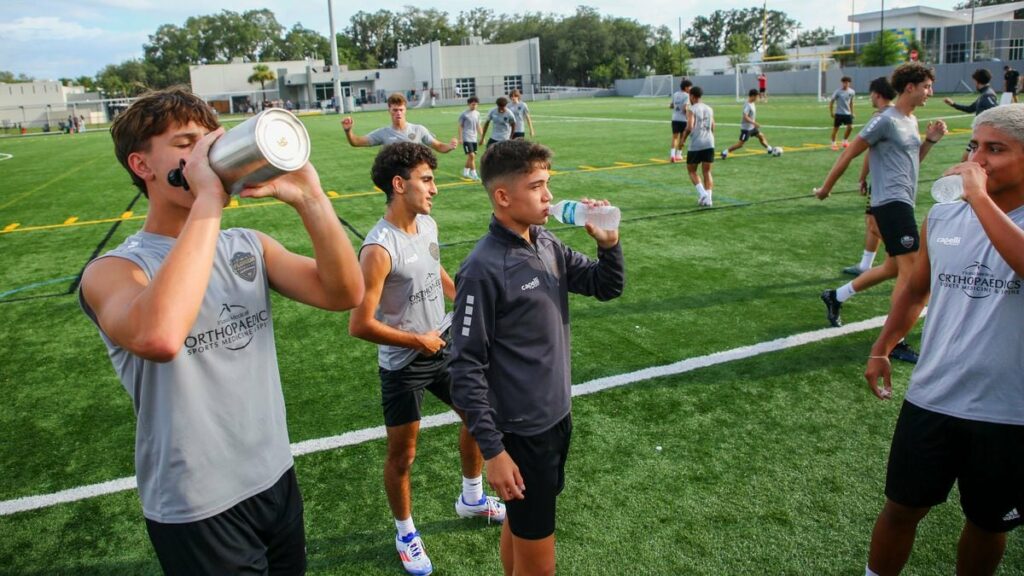Table of Contents
What are some practical tips for managing the heat in youth sports programs in Tampa Bay?
Is Tampa Bay’s Youth Sports Ready for the Heat?
When it comes to youth sports in Tampa Bay, the scorching heat is a major concern for players, parents, and coaches. With temperatures in the region soaring during the summer months, it’s essential to ensure that youth sports programs are adequately prepared to handle the heat and keep young athletes safe. In this article, we’ll explore how Tampa Bay’s youth sports are currently addressing this issue and what can be done to better prepare for the heat.
Challenges of the Heat in Youth Sports
Tampa Bay’s hot and humid climate presents several challenges for youth sports programs. Excessive heat can lead to heat-related illnesses such as heat exhaustion and heatstroke, which can be particularly dangerous for young athletes. In addition to the health risks, high temperatures can also impact the performance and enjoyment of sports activities, making it crucial to find effective ways to mitigate the effects of the heat.
The Current State of Youth Sports in Tampa Bay
While many youth sports programs in Tampa Bay take the heat seriously, there is still room for improvement. Some programs may not have the necessary resources or knowledge to effectively address the challenges of extreme heat. Additionally, there may be a lack of consistent guidelines and best practices for managing heat-related risks in youth sports.
Practical Tips for Managing the Heat
Fortunately, there are several practical steps that youth sports programs in Tampa Bay can take to ensure that they are ready for the heat. Some key tips include:
- Hydration: Encouraging athletes to stay hydrated before, during, and after practices and games is essential for preventing heat-related illnesses.
- Scheduling: Adjusting practice and game times to avoid the hottest parts of the day can help minimize the impact of the heat.
- Cooling stations: Providing designated areas for athletes to cool down and take breaks can help prevent overheating.
- Education: Educating coaches, athletes, and parents about the signs and symptoms of heat-related illnesses is crucial for early intervention.
Case Studies: Leading the Way in Heat Safety
Some youth sports programs in Tampa Bay are already setting a great example when it comes to heat safety. For example, the Tampa Youth Sports League has implemented a comprehensive heat management plan that includes regular hydration breaks, shaded rest areas, and education for coaches and parents. By prioritizing the safety of their young athletes, these programs are leading the way in heat management.
First-Hand Experience: The Impact of Heat on Youth Athletes
To truly understand the importance of heat management in youth sports, it’s essential to hear from the athletes themselves. Many young athletes in Tampa Bay have experienced the effects of the heat firsthand, whether it’s struggling to perform in sweltering temperatures or dealing with the aftermath of heat-related illness. Their experiences serve as a reminder of the critical need for effective heat management in youth sports.
The Future of Youth Sports in Tampa Bay
As awareness of the risks of extreme heat continues to grow, it’s likely that youth sports programs in Tampa Bay will become increasingly prepared to handle the challenges of the heat. By adopting best practices, educating stakeholders, and prioritizing the safety of young athletes, the future of youth sports in the region looks promising.
while Tampa Bay’s youth sports may still have work to do to fully prepare for the heat, there is a growing awareness of the need for effective heat management in the region. By taking practical steps and learning from successful case studies, youth sports programs can ensure that they are ready to handle the heat and keep young athletes safe and healthy.
The Risks of Playing Sports in Extreme Heat
William Olver, a teenage soccer player, experienced dizziness and blurred vision at a club practice during a hot Florida evening. The summer heat is a challenge, especially for teenagers, and the risk of heat-related illnesses is heightened during outdoor sports activities.
Statistics reveal a concerning trend in the U.S., with the number of heat-related deaths doubling in the last decade. Florida, in particular, has reported high rates of hospitalization due to heat illness, especially in youth. Moreover, children’s bodies are less efficient in adapting to heat compared to adults. In 2020, Florida introduced safety regulations for high school sports, yet there is still a lack of oversight for non-high school activities like leagues, clubs, and camps.
Summer sports organizations have made adjustments to mitigate the risk of heat-related illnesses. Soccer clubs have rescheduled practice times, shortened sessions, and emphasized proper hydration, nutrition, and sleep. Similarly, the Spurlino Family YMCA, in an effort to counteract falling enrollments due to summer heat, invested in outdoor cooling systems for its sports programs.
The higher temperatures have also impacted marching bands. Due to their rigorous practice schedules, bands have been practicing in extremely hot weather. State laws do not regulate clubs like marching bands, so they rely on their own fundraising efforts to take necessary precautions. Participants have also reported a greater struggle with the increasing heat levels.
In the coming decades, the U.S. is expected to experience more extreme heat days, with Florida being particularly vulnerable. As a result, summer sports organizations and clubs will need to continually make adjustments to ensure the safety of their members. the intensity of the weather and the potential risks it brings pose a growing concern for all those involved in outdoor sports and activities.
